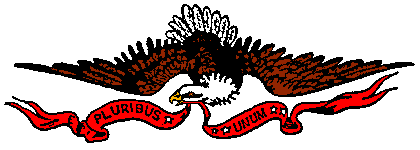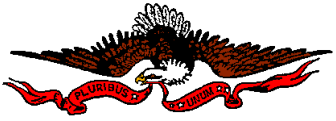
About Us
ABOUT FORT SEWARD, INC.:
Fort Seward, Inc. is a nonprofit organization established in 1969. This
organization was formed by local citizens whom wanted to preserve, protect
and promote the history of the Fort Seward Infantry Post, Jamestown, as
well as, the rest of North Dakota.
WHERE DOES THE WAGON TRAIN START:
The wagon train starts at the historic Fort Seward Park, overlooking the city of Jamestown, North Dakota, U.S.A. The Fort Seward Park was once the site of a U.S. Infantry Post. Jamestown is located in lower central North Dakota, along the Interstate 94 which is routed as a part of the scenic Lewis and Clark Trail route, enjoyed by numerous summer vacationers. The Fort Seward Park, which is located on the NW edge of the city, also displays a huge American Flag.THE FORT SEWARD PARK: starting location of the wagon
train.

Covered-Wagon-Train.com - Annual Family Wagon Train


HOW THE WAGON TRAIN STARTED:
The Fort Seward Wagon Train began as a onetime experience in 1969, but the organizers thought the experience so worthwhile that a wagon train has been organized annually since the first one. Now Fort Seward, Inc. considers the wagon train a project of great benefit to those who wish to relive the pioneer family experience. Now days this adventure takes place for one full week in late June. Fort Seward, Inc. continues to be organized by a Board of Directors; which volunteer their time to coordinate each wagon train trip. The board does not have any commercial interests in organizing our adventures. The wagon train is considered a valuable historical experience which the Board of Directors and volunteer staff find personal satisfaction..HISTORY:
The wagon train will stop at known historical sites, marked and unmarked along the way. Often there will be a few words on the significance of the site. The wagon train itself is several steps back into history, and Fort Seward, Inc. encourages all trail riders to participate enthusiastically in these recollections and this sharing of historical knowledge.CRAFTS:
During the wagon train, we also have a “craft person” with, who will guide trail riders to make a few craft items. Often beading is one of the crafts. The pioneers often spent part of the day, making themselves something useful or fixing and repair things, so they could continue down the daily trail.
WHILE ON THE TRAIL:
On the trail, the daily schedule begins early while the sun is still young. Breakfast is eaten, gear is packed, and the wagon train moves out. The wagons string out in a line, bordered by riders and walkers in small groups. The wagon train averages 3-4 miles per hour, depending on how "hard" everyone pushes up those steeper hills. There is a noon stop for lunch. In the evening the wagons are circled at our campsite. Then the horses are cared for while preparations for supper are made. In camp, activities involving arts and crafts, camp-crafts and nature lore spring up. Trail riders are encouraged to bring their musical instruments, craft material, etc., and to share them. Singing, skits, history talks and sharing stories around the campfire signal the end of the day.ABOUT THE WAGONS:
The wagon train consists mainly of canvas-topped, flare boxed, wooden wheeled wagons, just like those seen jostling about in western movies. The flare box wagon was the wagon of choice, for those pioneer farmers that came into the Dakotas, as they could later be used to haul the harvest from the prairie. An experienced "teamster" is assigned to drive each wagon. Wagons are powered by teams of draft horses and sometimes mules. Most common draft horses used during the wagon Train are the breeds of Belgiums and Percherans. The wagon train is equipped with a "chuck wagon" which, needless to say, becomes the center of attention.
This website is maintained by:
Fort Seward, Inc.
About Us
ABOUT FORT SEWARD, INC.:
Fort Seward, Inc. is a nonprofit organization established in 1969. This
organization was formed by local citizens whom wanted to preserve,
protect and promote the history of the Fort Seward Infantry Post,
Jamestown, as well as, the rest of North Dakota.
WHERE DOES THE WAGON TRAIN START:
The wagon train starts at the historic Fort Seward Park, overlooking the city of Jamestown, North Dakota, U.S.A. The Fort Seward Park was once the site of a U.S. Infantry Post. Jamestown is located in lower central North Dakota, along the Interstate 94 which is routed as a part of the scenic Lewis and Clark Trail route, enjoyed by numerous summer vacationers. The Fort Seward Park, which is located on the NW edge of the city, also displays a huge American Flag.THE FORT SEWARD PARK: starting location of the
wagon train.
HOW THE WAGON TRAIN STARTED:
The Fort Seward Wagon Train began as a onetime experience in 1969, but the organizers thought the experience so worthwhile that a wagon train has been organized annually since the first one. Now Fort Seward, Inc. considers the wagon train a project of great benefit to those who wish to relive the pioneer family experience. Now days this adventure takes place for one full week in late June. Fort Seward, Inc. continues to be organized by a Board of Directors; which volunteer their time to coordinate each wagon train trip. The board does not have any commercial interests in organizing our adventures. The wagon train is considered a valuable historical experience which the Board of Directors and volunteer staff find personal satisfaction..HISTORY:
The wagon train will stop at known historical sites, marked and unmarked along the way. Often there will be a few words on the significance of the site. The wagon train itself is several steps back into history, and Fort Seward, Inc. encourages all trail riders to participate enthusiastically in these recollections and this sharing of historical knowledge.CRAFTS:
During the wagon train, we also have a “craft person” with, who will guide trail riders to make a few craft items. Often beading is one of the crafts. The pioneers often spent part of the day, making themselves something useful or fixing and repair things, so they could continue down the daily trail.
WHILE ON THE TRAIL:
On the trail, the daily schedule begins early while the sun is still young. Breakfast is eaten, gear is packed, and the wagon train moves out. The wagons string out in a line, bordered by riders and walkers in small groups. The wagon train averages 3-4 miles per hour, depending on how "hard" everyone pushes up those steeper hills. There is a noon stop for lunch. In the evening the wagons are circled at our campsite. Then the horses are cared for while preparations for supper are made. In camp, activities involving arts and crafts, camp- crafts and nature lore spring up. Trail riders are encouraged to bring their musical instruments, craft material, etc., and to share them. Singing, skits, history talks and sharing stories around the campfire signal the end of the day.ABOUT THE WAGONS:
The wagon train consists mainly of canvas-topped, flare boxed, wooden wheeled wagons, just like those seen jostling about in western movies. The flare box wagon was the wagon of choice, for those pioneer farmers that came into the Dakotas, as they could later be used to haul the harvest from the prairie. An experienced "teamster" is assigned to drive each wagon. Wagons are powered by teams of draft horses and sometimes mules. Most common draft horses used during the wagon Train are the breeds of Belgiums and Percherans. The wagon train is equipped with a "chuck wagon" which, needless to say, becomes the center of attention.
This website is maintained by:




Fort Seward, Inc.
Covered-Wagon-Train.com
Annual Family Wagon Train
















